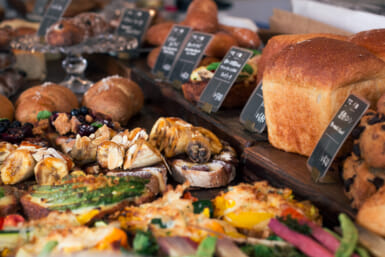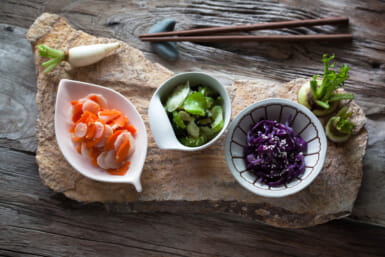A mini-seminar on wine at Manyoken restaurant
There is a deep satisfaction, a pleasure approaching a thrill, in tasting an unknown wine headed for greatness.
Those were feelings I had when I tasted a Grand Vin Noir, produced at the Hamilton Russell vineyards in the Hemel-en-Aarde Valley in South Africa. I had never heard of the vineyard or the wine, and I’m sure you haven’t either.
The color was a good red, but not impressive. It was the bouquet that astonished me. There was the telltale scent of berries — raspberries come to mind—with just a little touch of pepper or cinnamon which told me the grape used was a Pinot Noir. When I tasted the wine, I was equally impressed with its flavor. It was smooth, had good body and a perfect balance between its acidity and residual sugar.
I looked at Chris McDonald, President of Rolex, Inc. of Japan, sitting opposite me, and said:
“A magnificent wine, obviously made from the Pinot Noir. What do you think of it?”
“If I blind-tasted this,” he replied, “I would have guessed it was a Burgundy from the Cote d’Or, probably from the Cole de Beaune.”
We were having lunch a the Manyoken restaurant in Aoyama, slightly diagonally across from Kinokuniya on the fifth floor of the Spiral Building. He had brought the wine to the lunch, having received it from the owner via a friend common to both.
He proceeded to tell me more about the vineyard. It was purchased in 1975 by Tim Hamilton Russell, an Oxonian who loved wine (who from Oxbridge does not?). He planted the vines either in 1975 or 1976 and made his first wine in 1981, when the vines were five or six years old. At that age, the wine produced must have been rather thin.
We agreed the wine we were drinking must have been from the 1983 or 1984 vintage. It predated 1986, we knew, because of a peculiar law South Africa had and still has. That law ordained that the Grand Vin Noir could not be identified by grape or vintage until 1986. It still applies to the vineyard’s Grand Cru Noir, made from the Cabernet Sauvignon and Merlot grapes, McDonald said.
We both decided that if the wine were of 1986 vintage, it would be labeled Pinot Noir, 1986. The faint trace of brown we detected at the edge showed early aging, indicative of young grapes. But the brown did not appear until the glass was half-empty.
What amazed me about the wine was the fact it could have been mistaken for a Burgundy, for the Pinot Noir grape has a difficult time adjusting to other soils and climates outside the Burgundy region. There is many a bald-headed California vintner who has torn his hair out in rage and frustration over the Pinot Noir’s lack of cooperation.
I would like to see that wine in Japan, as I know that, as the vines get older, they will produce noble wines, This year, if the vines were planted in 1976, they will be 12 years old and at the beginning of their peak years, I would like to taste the 1988 vintage, assuming it’s a good one. I know very little about vintages in South Africa. Come to think of it, “little” is an exaggeration. I know nothing about them.
The wine was well set off by the food the Manyoken served. I had ordered a Boeuf a la Bourgeoise, ¥4,000, It was one of the finest examples of beef cooked in wine I have ever had. It had its own fine flavor and was tender and juicy. The wine had done its job well. So many similarly stewed beef dishes serve up i meat dry and lacking in flavor McDonald had a Filet de Boeuf Saute Stroganoff, also ¥4,000. He said it was excellent. I noticed that he, like me, had used bread to clean the sauce off his plate, a sure sign of a magnificent sauce. Both plates needed only rinsing.
There are a number of dishes that cry out to be tasted on the Manyoken menu. There’s a Cotelette d’Agneau a la Dijonnais or grilled lamb with mustard sauce, ¥3,800, and a Carbonnade a la Flamande, the famous Flemish beef stew made with beer, ¥4,200. Those are just two of the appetite-stimulating entrees, fish dishes, soups and hors d’oeuvres, all very reasonable in price, the menu offers.
The wine list is well represented with Grand Crus from Bordeaux and Burgundy as well as German and California wines. I noticed all the Burgundies were produced byLouis Latour which speaks well for the wine steward’s taste.
Manyoken is a very elegant restaurant with an outside area where one can dine al fresco on fine spring days and cool summer evenings. What is surprising about the restaurant is that its parent, Manyoken in Kyoto, opened its doors in 1910 as a French restaurant and has been serving French cuisine since then. It must be the oldest restaurant in Japan of its kind.
Chef at the Tokyo restaurant is Nobuhide Aramaki who learned his profession at the Kyoto headquarters. They taught him well there, as I can still remember his Beouf a la Bourgoise, and the lingering memory still stimulates my salivary glands.
Manyoken, as I said, is slightly diagonally across from the Kinokuniya Supermarket. Address is 5-6-23, Minami-Aoyama. Telephone is 498-5795. Master Card, Visa. Diners Club and Diamond credit cards are accepted.








